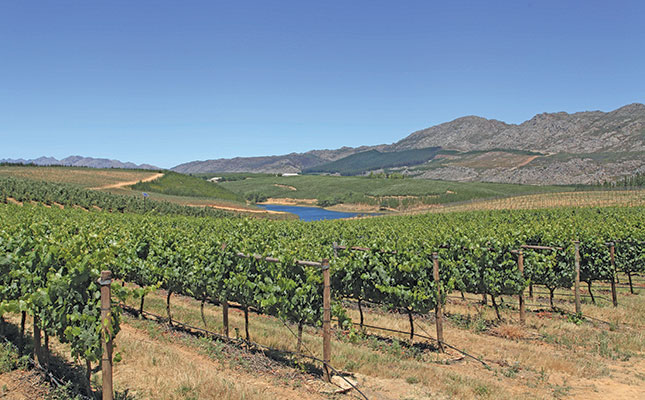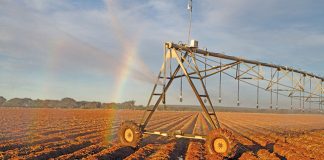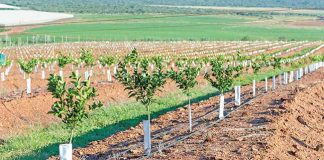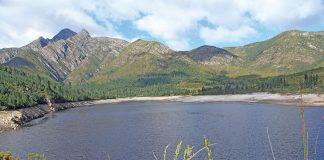
The Intergovernmental Panel on Climate Change has predicted that climate change could wipe out more than half of the world’s vineyards by 2050.
At an Old Vine Project (OVP) workshop held recently near Stellenbosch, OVP co-founder Rosa Kruger said wine farmers had to be far more strategic and take many more variables into account when planting new vineyards. This was all the more pertinent if they wanted their vineyards to last longer than 35 years in order to be classified as heritage vines.
According to Kruger, the selection of rootstocks and varieties should be based on their ability to withstand climatic shocks, such as floods and droughts, as well as their resilience to disease. One of her suggestions was to choose varieties that ripened earlier in the season, before heatwaves could affect the acidity in the wines.
Vineyard design
In addition, far more attention needed to be paid to the design of vineyards to improve their water-use efficiency and drainage.
For example, planting vineyard rows in a north-west/south-east orientation could prevent sunburn caused by direct sunlight. If the slope dictated a north-south row orientation, a sprawl system would allow for dappled rather than direct sunlight.
Kruger explained that if grapes were exposed to direct sunlight, the temperature in the berries would escalate during a heatwave and have an adverse effect on the juice.
“With temperatures getting higher, we need to ensure that grapes ripen naturally and aren’t ‘cooked’ ripe, as this will have a negative impact on wine quality. Wine grapes need dappled, not direct, sunlight,” she said.
To ensure good drainage and prevent erosion and landslides, farmers either needed to invest in expensive, expertly built drains, or plant along the natural contours of the land.
“The use of contours is actually an old concept; Prof WJ Talbot published a book about it, titled Swartland and Sandveld, in the late 1940s. He listed water conservation, reduced erosion, and the slower movement of water through the soil as only a few of the benefits of [contour farming],” said Kruger.
She opposed the use of terraces, however, as these left vineyards doubly exposed to sunlight, heat and drought, and disturbed the natural layers of the soil.
Vines should be leaner and less vigorous, as vineyards with large leaves, long shoots and bigger berries needed more water and were more sensitive to heatwaves.
Vineyards could be planted at higher altitude, as temperatures could be up to 1°C cooler for every 100m gain in elevation.
Kruger said opportunities for this existed in mountainous areas such as Piketberg and Ceres in the Western Cape, but these regions were better known for fruit production, which was more lucrative than wine grapes. Fruit would therefore take priority over the establishment of vineyards, unless the farm did not have sufficient water to plant more fruit.
She added that west- and north-facing slopes were warmer than those facing the south or east, as they received more direct sunlight. Wind, however, was an overriding factor, and if farmers planted vineyards near the sea, they needed to take into account the direction of cooling breezes from the ocean.
Biodiversity
Kruger was apprehensive about farmers moving to new, previously unplanted areas that might be conservation zones or planted to natural fynbos.
“If we move away from hotter regions to new areas, the land we leave behind should be rehabilitated with indigenous plants and trees,” she said.
She added that soil biodiversity needed to be increased. “As it gets warmer, it will become increasingly important to create refuge areas for animals, insects and other organisms, where they can find food, water and shelter. We also need to ensure that our wetlands are healthy and not filled with aliens,” Kruger said.
To achieve this, farmers could create biodiversity hotspots or corridors in their planted areas. This would help to create a healthy population of diverse species that would, in turn, assist in keeping problem species in check.
“Climate change will result in changes to pest and disease cycles. Instead of doing blanket applications of pesticides, we should use our ecosystem services, as well as predatory and parasitic insects to our advantage,” she advised.
Along with this, she recommended that farmers improve soil health and structure through the use of cover crops and mulches, for example.
“Soil experts these days believe that bare soil is dead soil. Dead soil erodes easier and cannot sustain vines sufficiently during heatwaves,” she said.
Kruger added that a mix of annual cover crops, each of which brought its own benefits, was much better than a perennial monocrop. Nonetheless, she was not in favour of using cover crops throughout the year, as they competed with vines for water and nutrients, and could seriously affect the growth of vineyards and the ripening of the grapes in summer.
In spring, cover crops could be rolled flat to create a blanket of plant material that served as a habitat for soil organisms and improved the carbon content of the soil. This would help to improve the soil’s water-holding capacity and control weeds.
Tools and Tech
Further advice from Kruger was for farmers to familiarise themselves with the latest technologies to determine which of these would help improve their vineyards’ climate resilience.
She said that Cape Farm Mapper, a free web-based mapping application launched by the Western Cape Department of Agriculture in 2011, was an excellent tool for farm planning.
The solution provided information that covered everything from the topography of the land, including contours, slopes, and aspect; to soil and geological information; and long-term climate data, such as evaporation, rainfall, chill and temperature.
While Kruger was largely against mechanisation, she said it might help. “If it allows you to harvest very early in the morning to ensure the grapes arrive at the cellar in cool temperatures, rather than doing so during the midday heat, then harvesting machines could be the way to go.”
Management
When it came to the management of old vines, the priority would be to maintain a good root system.
“The goal isn’t necessarily to have a deeper root system, but rather one with more roots in order to widen the search for water and nutrients.
“Roots will flourish and work best in healthy soil with a high level of biodiversity,” she said.
With pruning, the first step would be to “use your good wood”. Kruger explained that the strongest canes had to be used to rebuild the vine. The next step would be to prune to one or two buds, depending on the strength of the bearer, and never to cut into old wood or arms (older than two years), as this would cause deep wounds that could increase the risk of disease.
In the case of bush vines, suckering or shoot thinning should be carried out on three shoots per spur as opposed to two, provided that the vine was strong enough. This would allow the vine to focus more energy on grape production.
Suckering should also be done to increase air flow through the canopy, which would subsequently help to reduce disease pressure.
Kruger pointed out that changes to vine management and improvements to fertilisation programmes had increased the yields of many of South Africa’s very old vineyards. An example was Jakkalsfontein wine farm in Malmesbury, where production in one of the old vineyards had improved substantially thanks to correct pruning and other OVP management practices.
Finally, Kruger said old blocks of vines could also be interplanted with young ones, but this practice was capped at 15% at any given time to qualify for heritage wine certification.
Email the Old Vine Project at [email protected].










